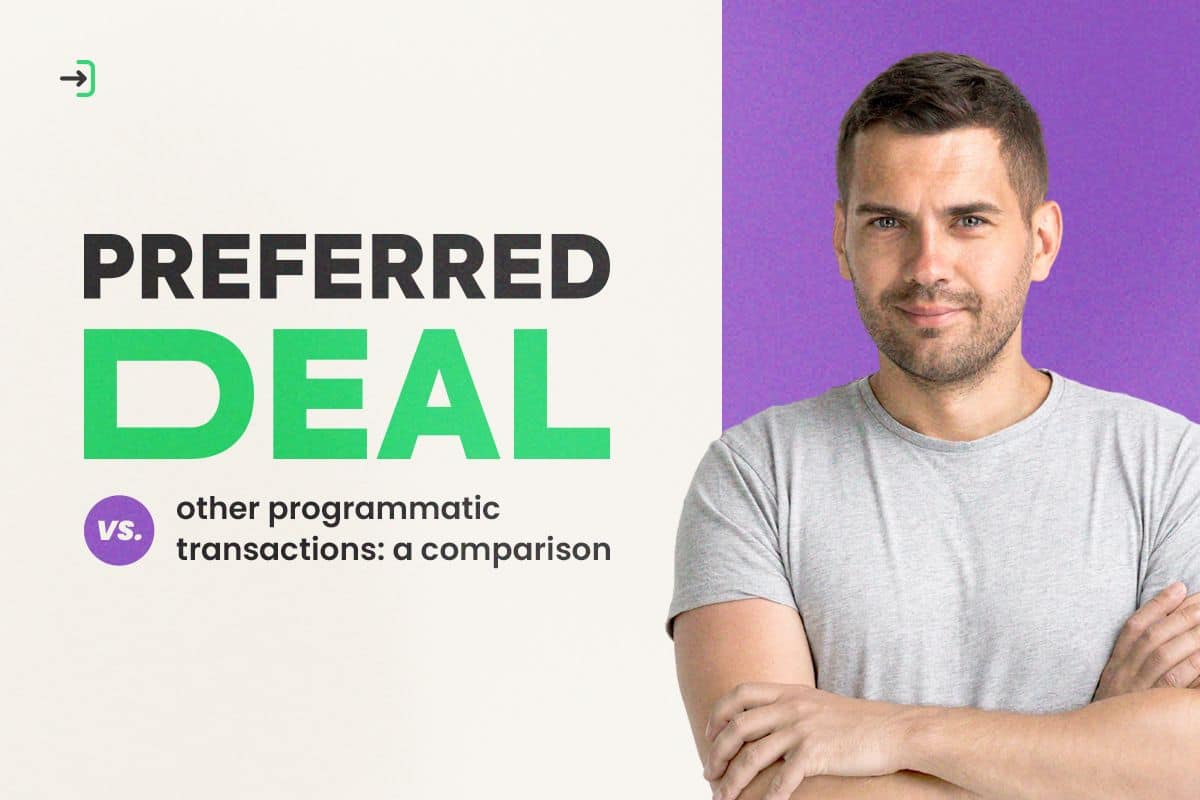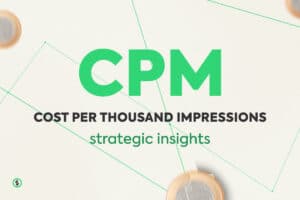When it comes to programmatic advertising, preferred deals offer a distinct approach compared to other transaction types. Preferred deals, also known as preferred partnerships, provide a unique connection between buyers and sellers in the realm of programmatic advertising.
In this article, we will delve into the realm of Preferential Agreements, explore its differences from other programmatic transactions, and highlight its advantages and disadvantages for your advertising business.
Index
Understanding Preferred Deals
Preferred deals represent a form of direct programmatic transactions wherein publishers offer exclusive access to specific ad inventory in exchange for a predetermined CPM rate. This type of agreement is negotiated through a Supply Side Platform (SSP). The price is fixed, meaning that the ad impression bypasses the auction process.
Unlike programmatic guaranteed or private marketplace transactions, where the advertiser commits to buying a certain volume of impressions, Preferential Agreements do not come with a guaranteed purchase commitment. Instead, advertisers have the option to purchase the inventory. If the advertiser chooses not to buy, the ad space can then be routed to an open auction or private marketplace.
Advantages
Preferential Agreements offer several benefits to both advertisers and publishers:
- Predictability: Publishers can select specific agencies and advertisers to negotiate with and establish a fixed price for the deal, leading to more predictable revenue expectations.
- Security and Transparency: Choosing agencies and advertisers for this type of negotiation enhances security and transparency for both parties, minimizing the risk of fraud.
- Higher CPMs: Advertisers are willing to pay premium CPMs to ensure impressions on their desired target audience. On the publisher’s end, negotiating with multiple buyers before finalizing the deal can result in higher revenues.
Disadvantages
However, preferred deals also come with their own set of challenges:
- Time-Consuming: Publishers need to invest time in researching potential interested advertisers, which can be time-consuming.
- Unfilled Impressions: Since advertisers have the choice to decline impressions, unfilled ad spaces might increase.
- Not Suitable for All Publishers: Preferred deals are most beneficial for publishers with substantial traffic and/or a unique audience.
Differentiating Preferred Deals from Other Transaction Types
It’s important to understand the distinctions between Preferential Agreements and other programmatic transaction types:
- Preferred Deals vs. Programmatic Guaranteed: Both are direct deals where chosen agencies and advertisers get exclusive inventory access. However, in Preferential Agreements, there’s no guaranteed purchase commitment, and advertisers can decide not to proceed once they get a first look. In contrast, programmatic guaranteed transactions guarantee the sale, involve one-on-one negotiations, and have high priority in the AdServer.
- Preferred Deals vs. Private Marketplace (PMP): Both these transactions allow publishers to invite buyers. However, in preferred deals, there is no auction or Real-Time Bidding (RTB), and the inventory price is fixed. On the other hand, in the private marketplace, the highest bid wins, agencies and advertisers don’t have access to the first look, and the offer has lower priority in the ad server.
Conclusion
Preferred deals are an effective way for publishers to showcase their inventory to agencies and advertisers and sell it at a fair price. However, successfully building a close connection with potential buyers demands effort and time investment.
While preferred deals offer predictability, security, and higher CPMs, they are not without challenges like time consumption and potential unfilled impressions. Overall, Preferential Agreements can significantly impact your advertising business, requiring strategic planning and collaboration. Remember, Grumft is here to support you on this journey.





